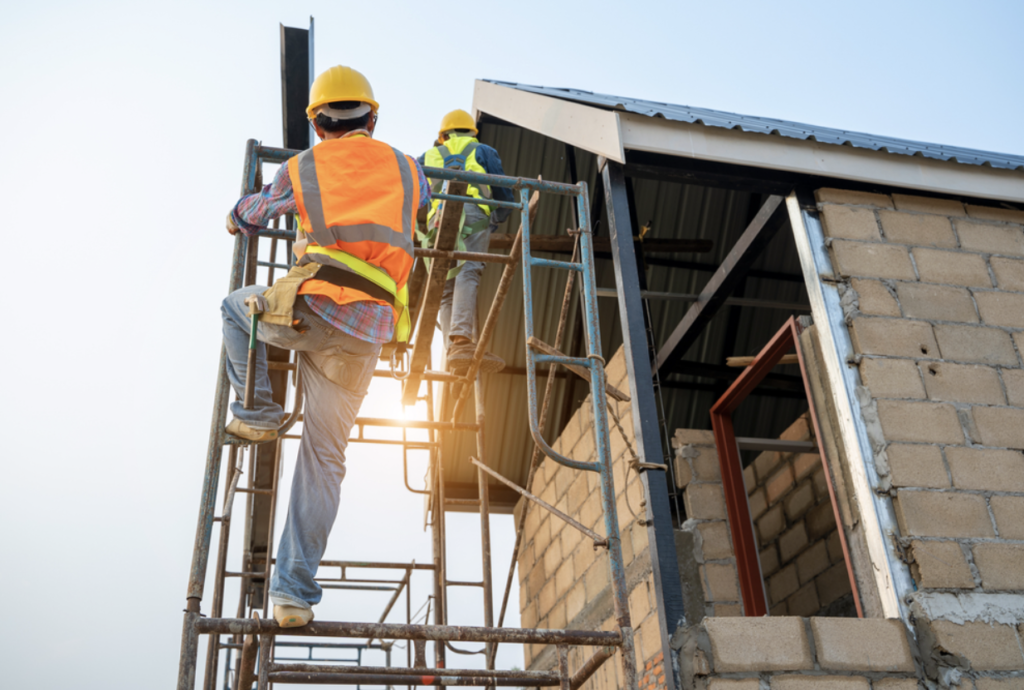Falls are one of the leading causes of fatality in on-the-job accidents. New York Labor Law § 240 — also known as the “Scaffold Law” — offers crucial legal protections to construction workers by requiring owners and contractors to provide adequate safety devices for work conducted at heights. Importantly, the statute imposes absolute liability for certain gravity-related accidents that happen on construction sites.
While the law is very specific, it’s essential for construction workers to be aware of what is covered and how the law is applied. Here are five things to know about New York’s Scaffold Law:
1. The Law Isn’t Limited to Scaffolds
Under New York’s Scaffold Law, owners, contractors, and their agents are required to provide certain types of safety devices for height-related activities. However, the statute doesn’t limit protection to just scaffolds — ladders, hoists, and other devices are included under the scope of the law. The statute also specifically lists slings, hangers, hoists, stays, blocks, pulleys, braces, irons, and ropes.
2. The Scaffold Law Offers Protection from Falling Objects
In order to invoke the protections of the statute, the accident must be one that involved the forces of gravity. Not only does the Scaffold Law offer legal safeguards to construction workers for falls from heights, but it also applies to falling objects. Critically, the falling of an object does not create a labor law violation by itself — the object must have fallen due to the contractor’s failure to provide an adequate elevation device. Liability will not be imposed under the statute for a worker’s carelessness or an accident that didn’t involve a violation of the statute.
3. The Scaffold Law Covers Various Construction Activities
The Scaffold Law applies to seven categories of height-related construction activities. These include erection, demolition, repairing, altering, painting, cleaning, and pointing. However, it’s important to note that the law does not apply to maintenance, manufacturing, or decorative work. In addition, scaffolds are used to help many different workers carry out their jobs. Bricklayers, electricians, window washers, carpenters, and welders are just a few types of workers who are at risk for height-related accidents.
4. You Might Be Entitled to File a Personal Injury Action for a Scaffold Accident
Construction workers who are injured on the job due to a height-related accident might not be limited only to Workers’ Compensation for their recovery. Although workers cannot sue their employers due to New York’s Workers’ Compensation laws, they may be able to bring a personal injury lawsuit against a responsible third party. By filing a personal injury lawsuit, a worker may be entitled to recover their economic damages in addition to their non-economic damages — also referred to as “pain and suffering.
5. Absolute Liability Is Imposed for Failure to Comply with the Scaffold Law
Owners and contractors cannot delegate responsibility for implementing the necessary safeguards to a foreperson or another worker. If a responsible party violates the law, absolute liability is imposed. This means that an owner or contractor can be held liable for failing to provide adequate safety gear, even if they failed to exercise any direct supervision over the work at the time the injury occurred. A plaintiff is not required to prove negligence — only that the violation of the law was the proximate cause of the injuries.
Contact an Experienced New York Personal Injury Attorney
If you were in a height-related accident caused by a violation of New York’s Scaffold Law, you might be eligible to file a personal injury lawsuit to recover your damages. It’s vital to have a knowledgeable personal injury attorney by your side who can ensure you obtain the maximum compensation you deserve. The personal injury lawyers at The Dearie Law Firm, P.C. have been representing injured construction workers and their families for more than 30 years. They are committed to securing the best possible results in their cases.
The Dearie Law Firm, P.C. has convenient office locations in Manhattan, Brooklyn, and the Bronx, as well as mobile locations serving Brooklyn, Queens, Manhattan, the Bronx, Staten Island, Westchester County, Rockland County, Nassau County, and Suffolk County. Contact us today for a consultation.

